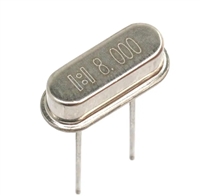ADSP-21368
Preliminary Technical Data
Each of the serial ports supports the left-justified sample pair
and I2S protocols (I2S is an industry standard interface com-
monly used by audio codecs, ADCs and DACs such as the
Analog Devices AD183x family), with two data pins, allowing
four left-justified sample pair or I2S channels (using two stereo
devices) per serial port, with a maximum of up to 32 I2S chan-
nels. The serial ports permit little-endian or big-endian
transmission formats and word lengths selectable from 3 bits to
32 bits. For the left-justified sample pair and I2S modes, data-
word lengths are selectable between 8 bits and 32 bits. Serial
ports offer selectable synchronization and transmit modes as
well as optional µ-law or A-law companding selection on a per
channel basis. Serial port clocks and frame syncs can be inter-
nally or externally generated.
porting both master and slave modes. The SPI port can operate
in a multimaster environment by interfacing with up to four
other SPI compatible devices, either acting as a master or slave
device. The ADSP-21368 SPI compatible peripheral implemen-
tation also features programmable baud rate and clock phase
and polarities. The ADSP-21368 SPI compatible port uses open
drain drivers to support a multimaster configuration and to
avoid data contention.
UART Port
The ADSP-21368 processor provides a full-duplex Universal
Asynchronous Receiver/Transmitter (UART) port, which is
fully compatible with PC-standard UARTs. The UART port
provides a simplified UART interface to other peripherals or
hosts, supporting full-duplex, DMA-supported, asynchronous
transfers of serial data. The UART also has multiprocessor com-
munication capability using 9-bit address detection. This allows
it to be used in multidrop networks through the RS-485 data
interface standard. The UART port also includes support for 5
to 8 data bits, 1 or 2 stop bits, and none, even, or odd parity. The
UART port supports two modes of operation:
The serial ports also contain frame sync error detection logic
where the serial ports detect frame syncs that arrive early (for
example frame syncs that arrive while the transmission/recep-
tion of the previous word is occurring). All the serial ports also
share one dedicated error interrupt.
S/PDIF Compatible Digital Audio Receiver/Transmitter
and Synchronous/Asynchronous Sample Rate Converter
• PIO (Programmed I/O) – The processor sends or receives
data by writing or reading I/O-mapped UART registers.
The data is double-buffered on both transmit and receive.
The S/PDIF transmitter has no separate DMA channels. It
receives audio data in serial format and converts it into a
biphase encoded signal. The serial data input to the transmitter
can be formatted as left justified, I2S or right justified with word
widths of 16, 18, 20, or 24 bits.
• DMA (Direct Memory Access) – The DMA controller
transfers both transmit and receive data. This reduces the
number and frequency of interrupts required to transfer
data to and from memory. The UART has two dedicated
DMA channels, one for transmit and one for receive. These
DMA channels have lower default priority than most DMA
channels because of their relatively low service rates.
The serial data, clock, and frame sync inputs to the S/PDIF
transmitter are routed through the Signal Routing Unit (SRU).
They can come from a variety of sources such as the SPORTs,
external pins, the precision clock generators (PCGs), or the
sample rate converters (SRC) and are controlled by the SRU
control registers.
The UART port's baud rate, serial data format, error code gen-
eration and status, and interrupts are programmable:
The sample rate converter (SRC) contains four SRC blocks and
is the same core as that used in the AD1896 192 kHz Stereo
Asynchronous Sample Rate Converter and provides up to
128dB SNR. The SRC block is used to perform synchronous or
asynchronous sample rate conversion across independent stereo
channels, without using internal processor resources. The four
SRC blocks can also be configured to operate together to con-
vert multichannel audio data without phase mismatches.
Finally, the SRC is used to clean up audio data from jittery clock
sources such as the S/PDIF receiver.
• Supporting bit rates ranging from (fSCLK/ 1,048,576) to
(fSCLK/16) bits per second.
• Supporting data formats from 7 to12 bits per frame.
• Both transmit and receive operations can be configured to
generate maskable interrupts to the processor.
The UART port’s clock rate is calculated as:
fSCLK
UART Clock Rate = --------------------------------------------------
16 × UART_Divisor
Digital Peripheral Interface (DPI)
Where the 16-bit UART_Divisor comes from the DLH register
(most significant 8 bits) and DLL register (least significant
8 bits).
The Digital Peripheral Interface provides connections to two
serial peripheral interface ports, two universal asynchronous
receiver-transmitters (UARTs), a Two Wire Interface (TWI), 12
Flags, and three general-purpose timers.
In conjunction with the general-purpose timer functions, auto-
baud detection is supported.
Serial Peripheral (Compatible) Interface
The ADSP-21368 SHARC processor contains two Serial Periph-
eral Interface ports (SPIs). The SPI is an industry standard
synchronous serial link, enabling the ADSP-21368 SPI compati-
ble port to communicate with other SPI compatible devices. The
SPI consists of two data pins, one device select pin, and one
clock pin. It is a full-duplex synchronous serial interface, sup-
Rev. PrA
|
Page 8 of 48
|
November 2004






 资料手册解读:UC3842参数和管脚说明
资料手册解读:UC3842参数和管脚说明

 一文带你了解无源晶振的负载电容为何要加两颗谐振电容CL1和CL2
一文带你了解无源晶振的负载电容为何要加两颗谐振电容CL1和CL2

 玻璃管保险丝与陶瓷管保险丝:区别与替代性探讨
玻璃管保险丝与陶瓷管保险丝:区别与替代性探讨

 PCF8574资料解读:主要参数分析、引脚说明
PCF8574资料解读:主要参数分析、引脚说明
